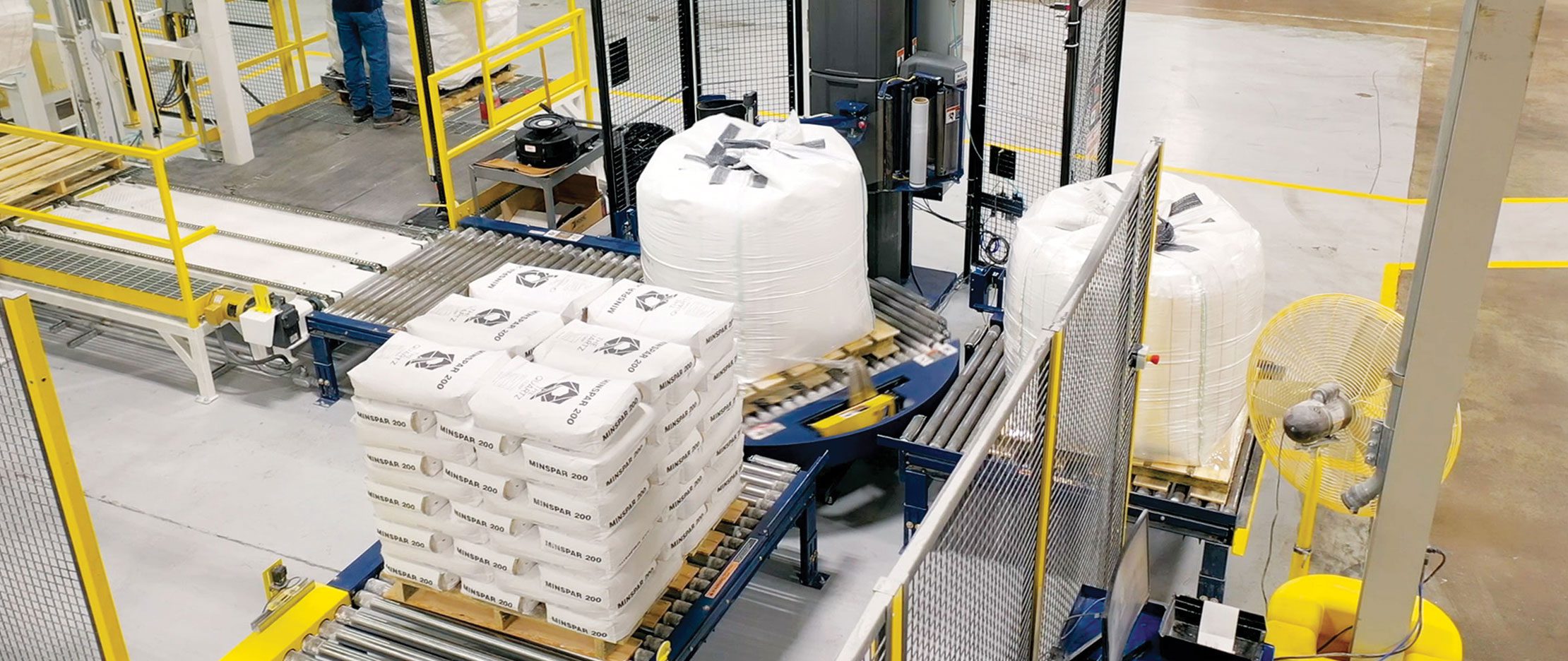
Bulk material handling systems are shaped and optimized by deeply understanding material characteristics like bulk density, particle size, and flowability. Understanding the characteristics of the materials you are working with is critical for designing efficient, reliable, and cost-effective systems. Flowability, abrasiveness, and moisture content are vital in how materials move, store, and process through your equipment. Challenges like blockages, wear and tear, or system inefficiencies can arise without proper consideration during the design phase, leading to costly downtime and maintenance. At Magnum Systems, we help businesses overcome these challenges with tailored solutions and deep expertise, ensuring optimal performance at every step. A couple of ways we help companies is by designing and building customized pneumatic conveying solutions and packaging equipment offerings.
Why Material Characteristics Matter in Bulk Material Handling
Designing an effective bulk material handling system begins with understanding the unique properties of the processed materials. Each material behaves differently under varying conditions, from powders and granules to flakes and pellets. Ignoring these characteristics can lead to equipment wear, flow blockages, or safety hazards. By prioritizing material analysis early on, application engineers create systems that maximize productivity while minimizing operational risks.
Key Material Properties and Their Impact on Design
1. Bulk Density
Bulk density—material weight per unit volume—directly influences equipment sizing and load capacity. High-density materials like metals require solidly built conveyors and storage bins, while lightweight plastics may need airflow adjustments in pneumatic systems. For example, Magnum Systems’ pneumatic conveying systems are engineered to handle diverse densities, ensuring consistent material transfer.
2. Particle Size and Shape
Fine powders demand enclosed systems to prevent dust explosions, while larger granules might require wider conveyor belts. Irregularly shaped particles like wood chips often benefit from vibratory feeders to avoid jamming. Magnum’s integrated packaging systems adapt to particle variations, ensuring smooth transitions from storage to packaging.
3. Moisture Content and Flowability
Moisture can turn free-flowing grains into cohesive masses, causing bridging or ratholing in silos. Materials with poor flowability (e.g., sticky clays) often require hoppers with specialized liners or aeration devices. Solutions like Magnum’s material testing services identify flow challenges early, enabling precise system customization.
4. Abrasiveness and Corrosiveness
Abrasive materials like sand accelerate equipment wear, necessitating hardened steel components. Corrosive substances like salt may require stainless steel or polymer-coated parts. Magnum’s project management expertise assures material compatibility with every system component, extending the equipment's lifespan.
Optimizing System Design for Challenging Materials
1. Leverage Advanced Testing
Conduct permeameter tests to assess fluidization and permeability. In our test lab, which we use to test customers' materials, we can evaluate adhesiveness, degradability, and particle distribution to recommend optimal conveying methods.
2. Prioritize Flexibility
Modular designs allow adjustments for material variability. Adjustable screw conveyors or interchangeable hopper liners adapt to changing product lines.
3. Integrate Smart Controls
Real-time monitoring systems detect flow irregularities, triggering adjustments to prevent blockages or spills.
Magnum Systems' innovative test lab is crucial in determining material characteristics and handling methods. It offers comprehensive services to optimize bulk material handling systems. Our recently consolidated test lab has significantly enhanced our offerings and capabilities, providing a one-stop solution for pneumatic conveying and packaging system testing.
Magnum’s Test Lab: Material Evaluation and Testing Capabilities
Our innovative test lab in Lenexa, Kansas, determines material characteristics, which then help us determine the best method for each material. It offers comprehensive services to optimize bulk material handling systems and has significantly enhanced our capabilities, providing a one-stop solution for pneumatic conveying and packaging system testing.
Our test lab conducts thorough material evaluations, examining various factors that influence material behavior in handling systems:
Partnering for Success in Bulk Material Handling
Designing a system that aligns with material characteristics requires collaboration with experienced engineers. Magnum Systems combines decades of industry knowledge with cutting-edge technology to deliver solutions tailored to your needs. Whether you’re optimizing a food processing line or automating a chemical plant, our end-to-end integration services ensure seamless performance.
Finally, our test lab allows you to thoroughly examine your material’s properties and invest in a custom system that will reduce downtime, lower maintenance costs, and improve overall safety. Ready to transform your bulk material handling process? Contact us today to get started.
Magnum Systems podcast series, AIM!
RELATED POSTS
Eight Questions to Kick Off Designing Your Dry Bulk Material Handling System
Custom Material Handling: The Role of Application Engineers
Can Material Handling System Integration and Automation Boost Your Recruitment and Employee Results?
Six Ways to Build an Efficient and Productive Integrated Material Handling System
Maximizing Manufacturing Efficiency: The Role of Automation in Integrated Systems
Related Post
Digital Transformation in Mining: The Systems Integrator’s Prospect
From Pen Chart Recorder to Digital: Making the Transition with Confidence
John Girgis Appointed Director of Engineering at Magnum Systems
When to Repair or Replace: A Guide For Aging Material Handling Equipment